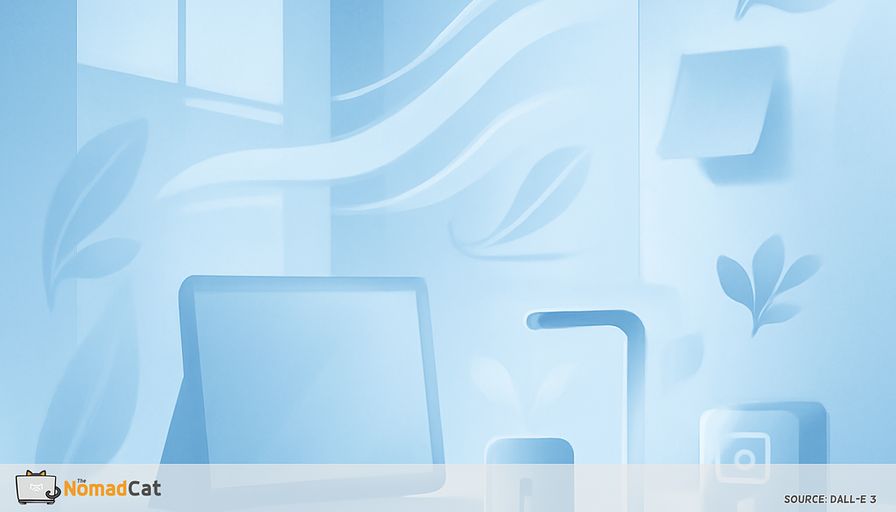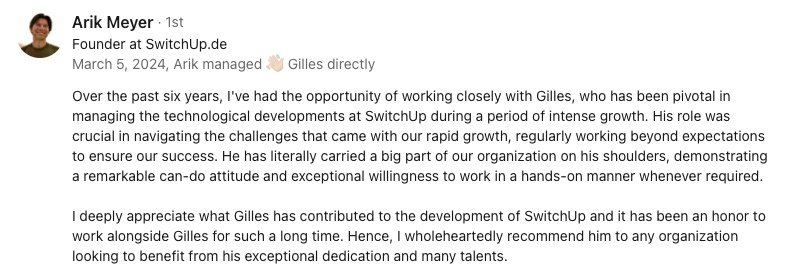Abstract:
The article emphasizes how small, often overlooked sensory details—light, air, and subtle scent—can significantly enhance comfort and focus in minimalist tech workspaces, especially for those frequently moving between apartments, rentals, or coworking desks. Drawing on research and firsthand experiences of digital nomads and tech workers, it offers practical, portable solutions for improving daylight exposure, maintaining air quality without permanent installations, and introducing gentle, customizable scents that support productivity and well-being without bothering others. The guide details creative, low-tech methods like using mirrors to reflect natural light, DIY air filters such as the Corsi-Rosenthal box, and scent cues with dried herbs or essential oils, all designed to be easy to set up, remove, and adapt to any temporary space. It also highlights the value of simple routines—quick sensory checks, physical prompts instead of digital reminders, and linking small adjustments to movement—which together create a flexible, healthy, and distraction-free environment. Real-world anecdotes, like finding comfort with just a lamp, fan, and scent in a tiny Lisbon apartment or relying on a portable kit of multipurpose tools when moving between global cities, illustrate how consistent, minor tweaks—not expensive gear—make any workspace feel truly functional and personal. Ultimately, the article shows that by mindfully attending to light, air, and scent, anyone can create a comfortable tech workspace that adapts as life or location changes, proving that comfort comes from small, intentional adjustments rather than costly or permanent setups.
Invisible details can make or break comfort in a minimalist tech workspace. Having worked across Beijing, Berlin, and now Lisbon, I've noticed how different environments affect productivity in unexpected ways. Whether you're working from a rental apartment, a coworking space, or a temporary setup, the right adjustments to light, air quality, and subtle environmental cues can transform any space into a productive work environment. These factors often go unnoticed, but they significantly impact focus, energy levels, and overall well-being throughout the workday.
Here’s how I keep my workspaces comfortable and fresh, whether I’m in a tiny rental, a coworking nook, or just a borrowed desk for the week.
Lighting for comfort
Natural light, real results
Natural light affects more than just visibility. When you work near a window, you're more alert and less irritable by afternoon. Sunlight helps regulate your body's internal clock, leading to better sleep quality and improved focus during working hours. Even in cramped spaces, you can angle a mirror to bounce daylight deeper into the room - a simple trick that makes spaces feel bigger and keeps eyes from getting tired.
Quick ways to boost light without clutter:
- Position your desk near a window as your first priority
- Lean a mirror on the windowsill to double available daylight
- Use sheer curtains to spread light without harsh glare
- Choose light-colored furniture - pale wood desks are easier on the eyes and mood
For those frequently changing locations or working in spaces with limited natural light, portable solutions make a real difference. A clear acrylic chair and a rechargeable LED lamp that fits in your backpack can brighten even temporary spots. A compact LED lamp with adjustable color temperature supplements natural light effectively, while light-colored, portable desk accessories help maintain brightness.
These small changes make even temporary workspaces feel bright and welcoming, turning any corner into a place that feels like yours.
Breathing easy
When air gets stuffy
Air quality sneaks up on you. During my time in Beijing (2008-2017), air quality was a constant concern, but indoor spaces presented their own challenges too. Spend a week working with windows closed due to cold weather, and by Friday you'll have a headache and feel like your brain is wrapped in cotton. Stale air makes you tired, foggy, and irritable. Sometimes you don't notice until you step outside and realize what you've been missing.
Closed windows - whether for privacy, noise, or bad weather - turn rooms stuffy fast. Watch for warning signs: dry eyes, musty smells, or that heavy, sleepy feeling that creeps in by mid-afternoon. Poor air quality creates measurable impacts on cognitive performance and comfort. Elevated CO2 levels reduce decision-making ability and increase fatigue. In enclosed spaces, especially during colder months when windows remain closed, air quality deteriorates quickly.
Quick fixes for fresher air
Here's what works to keep air moving, even in tiny or shared spaces:
- Open a window, even for five minutes. It's the cheapest fix and works wonders for exchanging stale air.
- If windows must stay shut, use a small fan or build a DIY air filter with a box fan and a good filter. It's not pretty, but it works.
- Portable HEPA air purifiers are perfect when you're moving frequently. Keep a tiny USB-powered one - easy to pack, easy to use.
- Wipe down surfaces often. Dust builds up fast in small spaces, and it makes a noticeable difference.
- Skip the plants for air cleaning. They look nice, but a filter does more actual work.
Spotting air problems
You don't need fancy gadgets to know when air's off. Look for:
- Condensation on windows
- Musty or stale smells
- Dust collecting faster than you can wipe it
If you want to be sure, use a cheap digital air monitor that fits in your bag. It tells you if you need to open a window or run the filter. Check filters and vents every month - just a quick look keeps things from getting gross. Simple indicators help assess air quality without expensive equipment. Rapid dust accumulation indicates air circulation issues, while persistent odors signal the need for better air exchange.
For those wanting precise measurements, affordable digital air quality monitors can track CO2 levels, humidity, and particulate matter, providing objective data for optimization decisions.
Scent and the invisible workspace
Subtle scent, big impact
Strong smells in a small space create disaster. Keep it subtle instead. A bowl of citrus peels on the desk works well - sometimes a cotton ball with a drop of mint oil, or a little jar of dried lavender. These are easy to swap, don't bother roommates, and make the space feel personal. Scent significantly influences mood and cognitive performance, but subtlety is key in workspace environments. Strong fragrances overwhelm and distract, while gentle, natural scents enhance focus and create positive associations with work.
If you're frequently moving:
- Dried lavender or mint sachets - toss them in the bag, no mess
- A ventilated jar of coffee beans (smells like a café, hides other odors)
- Scented stickers on your notebook - silly, but it works
How scent shapes work
A hint of citrus wakes you up and keeps you focused, especially during long coding sessions. Mint helps when you're fighting off the afternoon slump. Lavender is for winding down, not for work - it can make you drowsy mid-email. Everyone's different, so start with a tiny amount and see how it feels. Too much scent is just distracting, and in shared spaces, it's not fair to others.
Research backs this up. Citrus scents may enhance alertness and reduce mental fatigue. Mint can improve concentration and reduce stress. Lavender promotes relaxation but may reduce alertness during work hours. The key is using minimal amounts and choosing scents that personally enhance rather than distract from work tasks.
Scent cues and routines
Use scent to mark the start and end of your workday. Mint or citrus when you sit down to work, lavender when you're done. Over time, your brain gets the hint - work time or relax time. Swap out scents every week to keep things fresh and avoid that weird stale smell that can sneak up in small rooms.
Scent serves as a powerful environmental cue for work transitions. Using specific scents to signal the beginning and end of work periods helps create psychological boundaries, especially important in remote work environments where physical boundaries between work and personal space may be blurred.
Simple routines for comfort
Quick daily checks
Every morning, do a fast scan:
- Is the light right, or are you squinting?
- Does the air feel fresh, or do you need to open a window?
- Is there a weird smell, or do you need to swap out the citrus peels?
It takes a minute, but it saves you from headaches and bad moods later. This practice prevents the gradual deterioration of workspace conditions that can impact productivity over time. Establishing a brief daily assessment routine helps maintain optimal workspace conditions without much effort.
Physical prompts that help
Digital reminders never work - they just blend into the noise. Instead, use:
- A sticky note on the window to remind you to open it
- A small object on your desk to nudge you to check the light
- A token by your lamp to remind you to stretch
These little cues work better than any app, especially if you like to keep things simple. Digital reminders often get ignored, but physical cues integrated into the workspace can be more effective. These tangible reminders work better than software notifications because they exist in the physical environment where the behavior change needs to occur.
Small changes, big comfort
Micro-adjustments that matter
Tiny tweaks add up. Moving a lamp, cracking a window, or swapping out a scent can change the whole vibe. You feel better and less wiped out when you control these small things. No fancy gear needed - just paying attention and being willing to try something new.
Workspace comfort often comes from small, incremental improvements rather than major overhauls. Minor adjustments to lighting angle, chair position, or air circulation can significantly impact comfort levels throughout the day.
Movement and sensory checks
Tie your sensory checks to movement. Stretch your arms while adjusting the lamp, or take a deep breath when you open the window in the morning. It's a small thing, but it keeps you from turning into a statue at your desk. Over time, these little routines make the workspace feel right, no matter where you are.
Connecting sensory assessments to physical movement creates positive feedback loops. Taking a moment to stretch while adjusting lighting, or doing a quick posture check when opening a window, helps maintain both physical and environmental awareness.
Portable toolkit and hacks
What's in the bag
After years of changing work locations, here are the essentials:
- Slim LED lamp (doubles as a phone charger)
- Foldable daylight panel (for those windowless corners)
- Tiny USB HEPA air purifier
- Digital air monitor (fits in a side pocket)
- Dried mint sachet or citrus peels (for scent)
- Collapsible stand for your laptop
- One small object for reminders
These all fit in a backpack and set up in minutes. Tools that do double duty mean less to carry and more flexibility. For those who frequently change work locations, a compact kit ensures consistent workspace quality regardless of the environment.
DIY hacks that work
- The Corsi-Rosenthal box: a box fan plus a good filter. Ugly, but effective during allergy season.
- A bowl of herbs or citrus peels for scent - easy to refresh, easy to toss.
- Fold-down desk to save space and sanity.
- Cracked window even in winter - sometimes you just need a breath of real air.
Simple, homemade solutions often outperform expensive alternatives. A box fan with an attached air filter creates effective air purification. Natural air fresheners like bowls of herbs, citrus peels, or coffee beans work well. Strategically placed mirrors or light-colored surfaces can improve lighting. Even slightly opening windows during appropriate weather makes a difference.
Designing for tight spaces
When space is tight, every detail counts. Use:
- Modular desks and fold-down tables to reclaim floor space
- Hidden cable trays to keep wires out of sight (and avoid tripping over them)
- Soft screens or portable panels to carve out a focus zone in noisy spaces - without blocking the light
Simple, clean designs help you stay calm. A dimmable lamp and a clear desk make even a shoebox apartment feel like a real workspace. When working in limited space, every element must serve multiple purposes. Modular furniture like fold-down desks and adjustable surfaces maximize flexibility. Cable management prevents clutter and safety hazards. Portable screens create room dividers that don't block light, establishing focus zones. Vertical storage solutions keep surfaces clear.
Simple, clean designs reduce visual clutter and mental fatigue. A well-organized, minimal setup with attention to lighting, air quality, and subtle environmental cues can make even the smallest space feel professional and comfortable.
Data-driven workspace optimization
The most effective workspace improvements are measurable - an approach that comes naturally from my background in physics. Track how environmental changes affect your energy levels, focus duration, and overall comfort. Simple metrics like the number of productive hours, frequency of breaks needed, or end-of-day fatigue levels can guide optimization decisions.
Test one variable at a time - lighting adjustments one week, air quality improvements the next - to isolate what works best for your specific situation and preferences. After years of optimizing workspaces across different cities - from Beijing's pollution challenges to Berlin's long winters and now Lisbon's abundant light - the lesson is clear: comfort comes from small, regular tweaks. You don't need expensive gear - a cheap lamp or a cracked window can do wonders. It's the little things, repeated, that make any place feel like your own.
A minimalist tech workspace isn't just about a clear desk. It's about all those invisible details - light, air, scent, a quick stretch - that make work lighter and more focused. A cracked window or a single lamp can turn a cramped room into a place you actually want to work. Sometimes, the simplest tweaks - like swapping out a scent or moving your chair - are the ones that make all the difference. And if all else fails, there's always a bowl of oranges.














